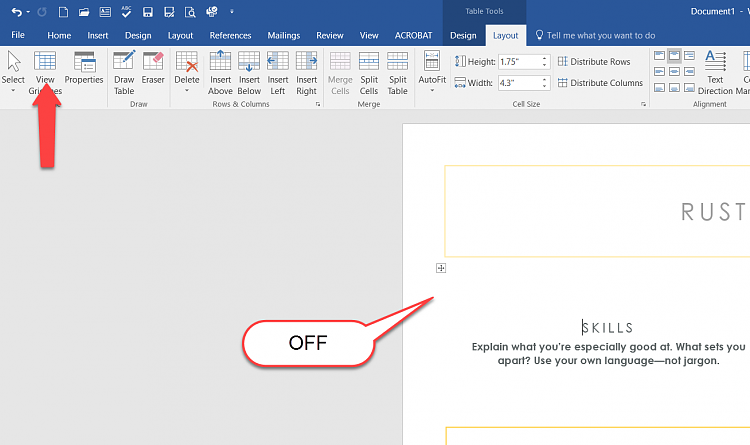

Insert Cells dialog box Tip 5: How to Add Color to a Table Note that regardless of your answer, you will be inserting an entire row or column, not an individual cell. If you select Insert Cells, a dialog box will appear asking where you want to insert your new cells. Select the location of your new row or column:.Click and hold as you drag the border to resize the row or column.Note that the pointer in figure 14 is enlarged to make it easier to see.


Quick Tables are prebuilt tables and calendars you can modify for your own use. Select the OK button to close the Insert Table dialog box and insert your new table.įigure 8.“Remember dimensions for new tables” option (Optional Step) Check Remember dimensions for new tables if you want to create the same size table in the future.įigure 7.AutoFit to Window adjusts the width of the table to the viewer’s Word window or browser window.AutoFit to contents adjusts cell sizes to the content.

Fixed column width can be set to Auto or a specific width between 1/100 inch and twenty-two inches using the increment arrows.Enter the number of rows and columns in the Insert Table dialog box.Select Insert Table from the drop-down menu.Select the Table button in the Tables group (see figure 2).Select the Insert tab in the ribbon (see figure 1).This method provides advanced sizing options. Method 2: Create a Table from the Table Dialog Box Click the selected (orange) part of the grid or press Enter on your keyboard to insert the table.Move your pointer across and down the grid to select the number of cells (organized as rows and columns) needed in your table.Select the Table button in the Tables group.Place your cursor where you want to insert the table.This method is appropriate for most users who want to create a basic table for general use. Method 1: Create a Table from the Table Menu


 0 kommentar(er)
0 kommentar(er)
